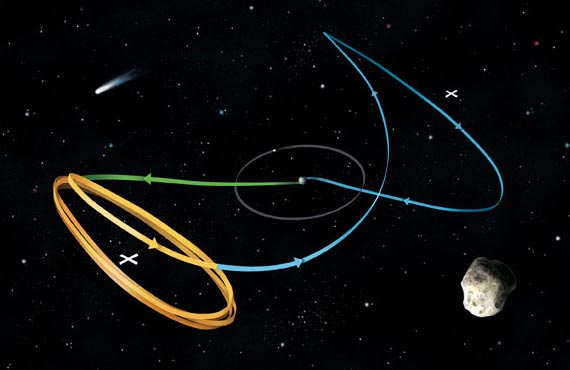 |
|
Getting from point A to B in space usually requires considerable quantities of propellant. But after it blasted off from Earth, the Genesis probe was able to travel 1.5 million kilometers toward the Sun (green portion of the trajectory), which is some four times farther than the Moon's orbit. Genesis then orbited the Earth's L1 Lagrange point collecting particles of the solar wind for two years before traveling millions of kilometers along a circuitous path (blue) that looped by another Lagrange point, L2, before returning to Earth in September 2004. Amazingly, Genesis completed this large journey using hardly any fuel. The probe did so by following one of the many possible low-energy paths through the solar system, exotic routes that have long served as natural conduits between planets for asteroids and comets. Some of these conduits lead to collision with Earth, as the Genesis probe's path did by design. |